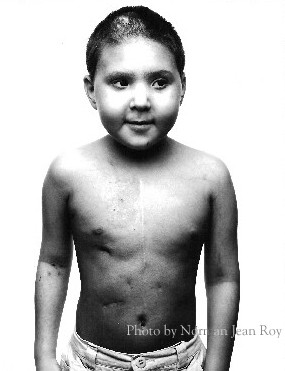
Uncle Dan was in the St. Louis newspaper today!

INNOVATING WITH: Daniel Low
By Rachel Melcer
07/27/2007
The project — Daniel Low, a radiation oncologist, is leading a team in developing more accurate ways of delivering pinpoint radiation treatments to lung tumors.
The challenge — Lungs are dynamic, constantly moving in changing patterns. The location of a tumor within the lung shifts with changes in how quickly or deeply a patient inhales or exhales, whether he is nervous or relaxed, his level of activity on the day of a treatment, and even how recently he has eaten.
Radiation kills healthy lung tissue, affecting the ability to breathe, so it is crucial for doses to be precisely applied. But there is no clinical way of accounting for these dynamic changes in movement, Low said.
The aha! moment — Low was working on a grant application that required him to write down a mathematical equation for calculating human breathing motion. It needed to account for changes in depth and rate of breath.
"I had a deadline and that forced me to sit down and think about it," Low said. "And I realized there was no such thing — the model didn't exist."
What he did — Low drafted the equation he needed. Dr. Parag Parikh, an instructor in radiation oncology, designed a device called the 4D Phantom to do the calculations and display predicted movement of a lung tumor.
Now, they're checking to see if it works. They are comparing the computer-generated model to dynamic images taken of real patients over time. The team uses a cutting-edge Philips CT scanner to image a patient's lung in 64 "slices," each just a half-millimeter thick, every four-tenths of a second to track tumor movement.
If Low's model proves to be an accurate predictor, companies and researchers can use the 4D Phantom for early tests of new therapeutic approaches, before patients are involved and put at risk. It also can be used to develop new software, devices and protocols for improved radiation therapy treatments of lung cancer.
Progress report — Low's lab has sold the 4D Phantom to research institutions including Harvard University and Massachusetts General Hospital for academic work.
The National Institutes of Health in July awarded the St. Louis team a grant to use Low's model in improving nuclear medicine imaging therapy. Low expects Royal Philips Electronics, already a research partner, to provide a multiyear grant.
If all goes well, "in terms of it being a turnkey approach, that's probably three years from now. That's where the patient will walk in and it will all be a part of the process and the (radiation treatment) appliance," Low said.


No comments:
Post a Comment